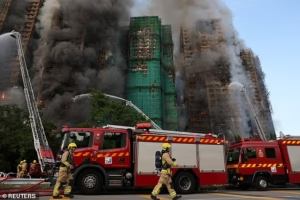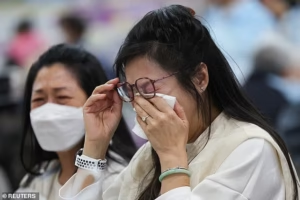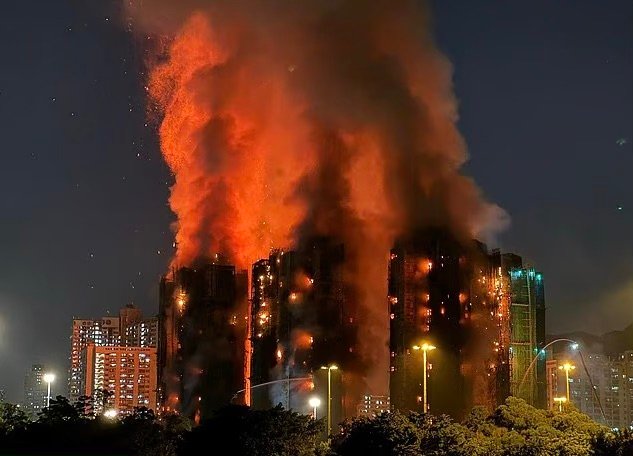Hong Kong is grappling with one of its worst disasters in decades after a towering blaze tore through a residential complex in Tai Po, leaving at least 36 people confirmed dead and 279 others reported missing, authorities said on Wednesday night.
City leader John Lee announced that 29 survivors remain in hospital, while nearly 900 residents have been moved into emergency shelters as crews continue combing through the multi-tower housing estate. Officials described the fire as the deadliest incident the city has seen in years.

Fire Rages for Hours Across Multiple Towers
The blaze erupted mid-afternoon in Wang Fuk Court, a subsidised housing estate built in the 1980s and home to nearly 4,800 residents, many of them elderly. Eight towers make up the complex. Within minutes, flames surged up bamboo scaffolding and construction netting surrounding sections of the building undergoing major renovation.

High winds helped drive the fire vertically and laterally, engulfing several blocks. Videos circulating online showed five buildings burning simultaneously, with flames pouring out of upper-floor windows as firefighters tried to reach the highest levels with ladder trucks.
More than 800 firefighters were eventually deployed. One of them, 37-year-old Ho Wai-ho, died after collapsing inside the disaster zone. Another firefighter remains hospitalized. Chinese President Xi Jinping offered condolences to Ho’s family and urged Hong Kong authorities to “spare no effort” in minimizing casualties.
Possible Safety Failures Under Scrutiny
The fire’s rapid spread raised immediate concerns about the safety of the exterior materials used on the towers, which were wrapped in bamboo scaffolding for ongoing HK$330 million renovation works. Authorities said investigators will examine whether the exterior walls and materials met fire-resistance requirements, drawing comparisons to past high-rise tragedies such as London’s Grenfell Tower.
Lee confirmed that police and the Fire Services Department have formed a joint investigation unit, which will look not only at structural and safety issues but also at any possible criminal negligence.
Residents Flee, Others Trapped
The fire was first reported at 2:51 p.m., escalating from a No. 4 to the city’s highest No. 5 alarm within hours. Many residents described chaotic scenes as thick black smoke flooded corridors and alarms rang out across the estate.
A 71-year-old resident, Mr. Wong, said he lost contact with his wife trapped inside one of the burning towers. Others gathered on an overhead walkway, watching in disbelief as smoke billowed from the estate.
By early evening, police had begun door-to-door evacuations in neighbouring Kwong Fuk Estate as a precaution. A major section of Tai Po Road—a key highway—was shut down, causing city-wide traffic delays. Six schools will remain closed on Thursday due to road closures and air-quality concerns.
Historic Context and Broader Safety Concerns
Hong Kong, one of the world’s most densely packed cities, has long relied on bamboo scaffolding, a traditional construction method that remains common even in modern building projects. However, the government announced earlier this year that it would begin phasing out bamboo at public works sites due to safety risks, with half of future projects required to use metal scaffolding instead.
Deadly fires were more common in Hong Kong in past decades, but improved regulations and modernized fire codes have made major incidents far less frequent. The current disaster marks the worst fire since 1996, when 41 people died in a commercial building in Kowloon.
Unanswered Questions as Rescue Efforts Continue
As of late Wednesday, fire authorities said they still could not confirm how many residents might remain inside the affected blocks. Police have opened a hotline for families searching for missing relatives.
Hong Kong’s government says all relevant departments are operating under emergency protocols, focusing on identifying survivors, stabilizing the site, and supporting displaced residents—many of whom have now lost their homes in a housing market already ranked among the most expensive in the world.
Source:Africa Publicity








